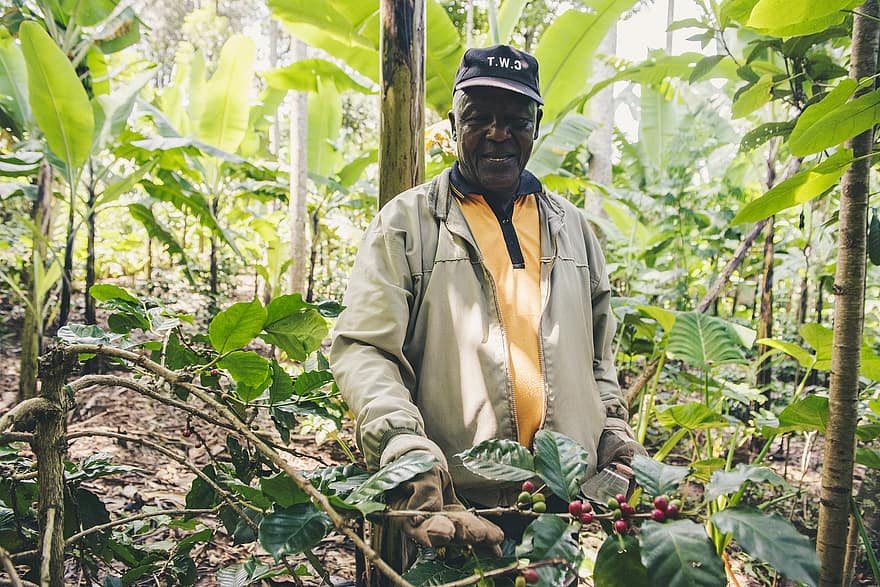By Parth Ahya and Justin Graham
Ahmadu is a farmer in northeastern Nigeria. His life is shaped by seasons. The best time of the year is October. In October, Ahmadu can sell several bags of his newly harvested grains for a small profit. Over the following 2–3 months, Ahmadu can afford to pay his children’s school fees. He can afford a more diverse diet for himself and his family of 7. Perhaps even splurge on the occasional chicken.
However, as the year chugs along, things begin to look worse for Ahmadu. The worst time of the year for Ahmadu is August of the following year. [CC1] With his crops still unharvested and food prices 50% higher than they were in October, Ahmadu and his family — along with 57% of households in northeastern Nigeria — typically go hungry.
Umar is a surgeon in northeastern Nigeria. His life, too, is shaped by seasons. The best time for Umar, however, is July. In October, Umar uses his salary to buy grains in bulk when prices are at their lowest. In July, he sells them — often to farmers like Ahmadu — for a significant profit.
This is not a story about heroes and villains. No one person is doing anything wrong here. Rather, it is a story about the significant effects of food price seasonality on the lives of rural residents of low- and middle-income countries like Nigeria. It is a story about structural economic realities that we cannot afford to ignore.
In a study of 193 local, wholesale markets in seven African countries, the World Bank found that seasonal variations in food prices were three times higher in Sub-Saharan Africa than they were on international commodity exchanges. The price of white maize, for instance, varied between the post-harvest and the so-called ‘lean season’ (the three-month period preceding the rainy season harvest) by 33%. This conceals significant variety between and within countries. In the retail markets of northeastern Nigeria, where we work, prices vary by 50–100%. In particularly bad years, like this one, it is more like 100–200%. As food prices skyrocket, people go hungry.
Abdou Garba, a farmer from Tara, Niger, reported at the height of the lean season that his family could not “afford more than one meal a day. We used to have three meals a day …We are hungry, our cattle is [sic] hungry.”
The consequences of lean season hunger, particularly for young children, are stark. “They’re the first victims of the lack of food,” assessed Dr. Yannick Tsomkeng, an MSF doctor in eastern Chad who treats children suffering from Severe Acute Malnutrition (SAM) regularly. Paul Christian and Brian Dillon found, by looking at 19 years of data on food consumption in Tanzania, that seasonal variation in consumption alone causes differences in height and educational attainment.
This is lost human potential and needless suffering. We ignore it at our peril. If we are to reach the U.N.’s Sustainable Development Goal targeting Zero Hunger, Luc Christiaensen, a Senior Economist for Africa at the World Bank, argues that we must renew “policy attention to seasonality in food prices and consumption.”
Ahmadu’s story is shared by hundreds of millions of people throughout Sub-Saharan Africa. It is a story that we do not have to tell ourselves anymore if we don’t want to. There are specific policies we can adopt today to end seasonal hunger. We could:
- Offer post-harvest credit to farmers like Ahmadu so that they can hold onto their crops until prices rise in the lean season, helping them smooth their incomes and avoid lean season hunger. In Kenya and Tanzania, randomized control trials found that doing so generated additional lean season income equivalent to 29% and 40% of the loan amount.
- Offer in-kind lean season credit in the form of food, to be repaid during the harvest. This worked in Zambia, where a loan of 5 bags of maize, to be repaid in-kind with no interest after the harvest, resulted in a 48% percent reduction in the proportion of households reporting that a family member had to skip a meal during the lean season.
- Offer storage to farmers. This worked in Tanzania, where giving farmers 5 Purdue Improved Crop Storage bags, which cost ~ $2 each, resulted in a 38% reduction in severe food insecurity during the lean season.
- Buy crops after harvest, store them, and sell them to households in the lean season for a discounted price. Currently, wealthier traders, like Umar in the story above, reap the benefits of seasonal price changes. In principle, the UN World Food Program, smaller non-profits, or even socially minded businesses, could leverage economies of scale and sell to households during the lean season at a break-even price. This could be particularly impactful in disastrous years when prices skyrocket by hundreds of percentage points.
However, our interventions must go beyond specific policies. Given the extent to which seasons shape the lives of individuals in Sub-Saharan Africa, a mindset change is required. All policies which reasonably could be counter-cyclical (relative to seasons) should be. If governments want to give cash transfers to their poorest citizens, they should focus on the months when people need it the most.
In high-income countries, eggs and bread cost the same at all times of the year. The worst off in the United States, South Korea, and Australia face significant volatility, no doubt, but seldom enough to shift the impact of welfare policies based on the timing of their delivery in a given year, ceteris paribus.
In low- and middle-income countries where transportation and logistics networks are ill-developed and either a majority or a plurality of people are farmers engaged in seasonal rain-fed agriculture, seasons continue to profoundly shape people’s lives. We cannot continue to ignore their effect.
Parth Ahya (BA, Keble, 2020) and Justin Graham (BA, Regents Park, 2019) lead The Taimaka Project, an NGO which implements market interventions to reduce seasonal hunger.

